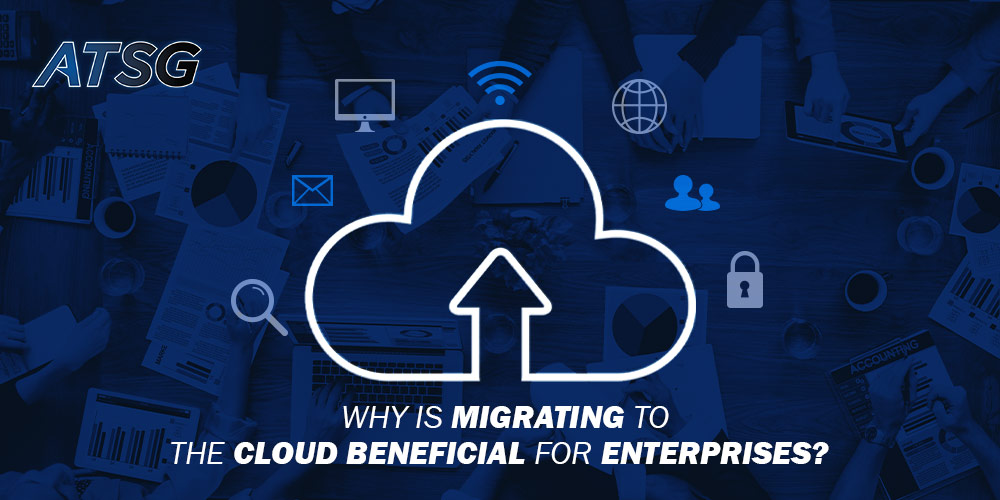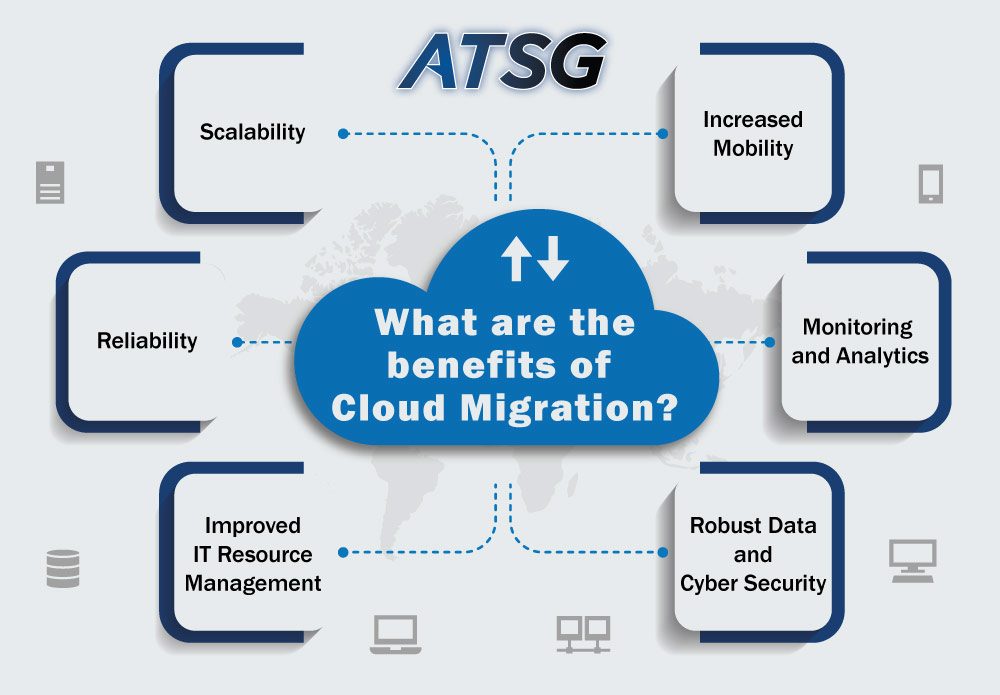The global pandemic has seen many companies accelerate their move to the Cloud, re-inventing their offerings and becoming cost-efficient, agile, and innovative. Cloud Computing and cloud-based services are a cornerstone of the IT Infrastructures of modern businesses. Every organization today is using some form of cloud technology within its processes and operations.

What Constitutes a Migration to the Cloud?
Cloud migration is a process in which digital resources are moved from on-premise infrastructure to the cloud. In business, there are three main stages of this migration. First, data sources and storage can be moved to the cloud, thus facilitating mobility, access, and security.
Second, applications and tools used by the organization can be accessed by all users through the cloud, which lowers maintenance costs and increases collaboration. Third, cloud software, and the adoption of such services and products can enhance the customer experience (CX) and improve cloud computing processes.
With covid-19 impacting the decisions of many organizations to shift to digital and remote solutions, cloud migration became a mandatory step globally. Businesses are increasingly migrating their data, systems, and processes to the cloud. This fact has created a major shift in enterprise storage priorities. The cloud refers to servers, resources, data storage, and more, which are all accessed on demand, over the internet, instead of being hosted on-premise.
What are the Major Cloud Migration Strategies?
There are various ways to move to the cloud, depending on the use case and organizational objectives. From migrating data, content, and services, to large-scale infrastructural changes, there are typically six ways to implement a cloud adoption.
- Re-host: A lift and shift system of cloud migration, which refers to the moving of applications from on-premise environments to cloud infrastructures in a straightforward way.
- Re-platform: This is similar to re-host, but with advancements to the existing applications and tools to enhance the cloud service experience.
- Re-purchase: Decommission an application, and replace it with the cloud version to adjust better to the cloud-based infrastructure, or to facilitate digitalization and remote workplaces.
- Re-factor: This involves re–architecting an application from scratch, to build a cloud-optimized application that caters solely to the cloud infrastructure.
How Does a Cloud Migration Process Work?
Moving to the Cloud can be a transformative shift for the entire business. It is wise to begin by taking an end-to-end look at the cloud journey. There are three main steps that can help enterprises execute cloud migration effectively.
The Value of Moving to the Cloud
A move to the Cloud is far from just a technological exercise. It is rather rooted in business outcomes that help companies achieve their objectives. Based on their objectives, organizations can begin to develop a cloud migration strategy and determine which applications and tools will be a part of the Cloud Infrastructure.
Discovery and Assessment
Businesses need to understand, discover, and assess their current infrastructure, application, and data landscape to identify an appropriate method of migration. This can be done through application discovery, dependency mapping, and risk assessment that is based on current usage, as well as pre-migration predictive analyses. The cloud migration assessment further enables businesses to make informed decisions and minimize risk, while ensuring elaborate Service Level Agreements (SLAs) after the migration.
Heavy Lifting of the Cloud Migration
This typically involves modernizing the existing applications for the cloud, developing new cloud-native applications, and transforming the architecture and infrastructure. Automated management and migration tools are critical to executing a smooth migration. They help speed up the move and deliver high quality, consistency, and repeatability. When this is paired with specialized skills, cloud migration can accelerate and proceed in a seamless manner.
What are the benefits of Cloud Migration?
The following list of advantages explores how cloud migration can successfully achieve business goals.

Scalability
It is much easier to grow and improve the quality of work and processes when using cloud-based solutions. Moreover, cloud service providers (CSP), like ATSG, can facilitate organizations with customized solutions that enable rapid business growth. Cloud solutions can make it possible to scale at a level that meets organizational objectives.
Reliability
Alongside scalability, the cloud offers higher reliability, availability, and up-time. Clouds are designed to always be accessible and ready to operate. Cloud users don’t solely rely on servers or data centers, rather such solutions are backed by elaborate SLAs, and all leading CSPs fulfill their contractual obligations.
Improved IT Resource Management
Changing IT hardware is expensive and takes longer to set up as well as integrate with legacy systems. In cloud solutions, however, all an organization needs to do is choose the appropriate Software as a Service (SaaS) or Infrastructure as a Service (IaaS) provider, and proceed with the migration.
Increased Mobility
With cloud migration, it is much easier and more secure to work remotely, or when on the move. This flexibility became vital after the outbreak of the pandemic. Organizations were expected to provide mobility and flexibility across their working environments, and the Cloud offers both.
Monitoring and Analytics
Cloud solutions often have built-in monitoring services, with automated and standardized logging of key performance metrics, equipped with data access, infrastructure, and maintenance. Cloud service providers (CSP) monitor and observe changes in the system to keep the organization posted on any anomalies that need to be addressed.
Robust Data and Cyber Security
Previously mentioned points add up to the security benefits of cloud migration. Cloud providers usually have better access to breach-resistant security solutions, much like ATSG’s zero-trust architecture and layered application security capabilities. Moreover, with cloud service providers, organizations wouldn’t have to worry about ever-evolving security protocols and software. Cloud Service Providers, like ATSG, take the bulk of the responsibility for the maintenance and security aspects of the deployed cloud environment.
Cloud migration has revolutionized the ways that cater to businesses of all sizes and industries. By utilizing the Cloud, organizations can manage all domains with ease and reliability. Leading cloud service providers (CSP), like ATSG, provide unlimited resources and services that enhance the process of migrating to the Cloud.
At ATSG, we can ensure enterprises are facilitated with the best cloud capabilities in the industry. One of the major services that ATSG offers is Hybrid Cloud and Transformation, which provides holistic assistance throughout all phases of your Cloud Migration. By leveraging our expertise, your cloud migration will be a seamless affair.




